Studio Visit: Joshua Light Show
Gary Panter and Joshua White tune you in and trip you out with an array of mind-bending works

Meeting Joshua White and Gary Panter is like stepping back in time. Not because White is responsible for creating the Joshua Light Show—the beautifully psychedelic backdrop that entertained thousands at Fillmore East concerts for Janis Joplin, Jimmy Hendrix, The Who and more in the 1960s—but because they continue designing experiences with the same childlike nature they likely possessed as creative young kids decades ago. This skillful, ingenuous approach is evident in their retrospective-like exhibition currently on view at the Museum of Contemporary Art Detroit, where Panter’s playfully simple illustrations and hypnotic graphics glow under White’s tightly orchestrated theater lights.
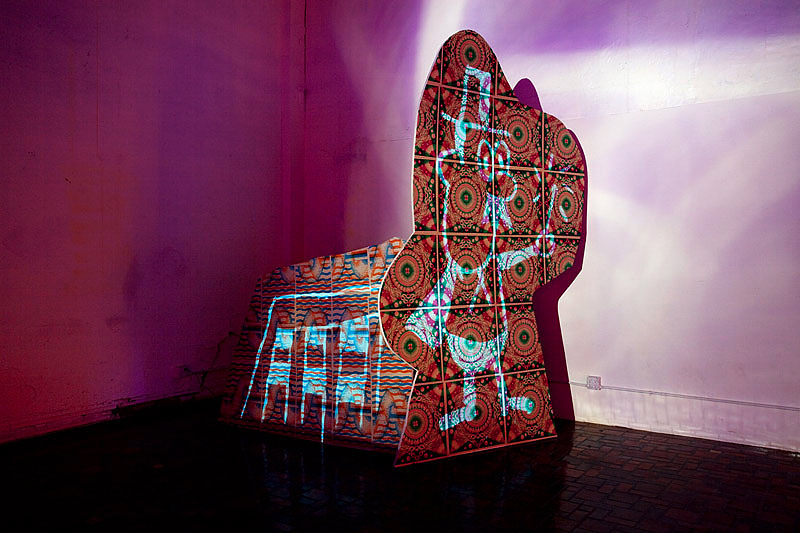
While kindred in spirit, the two are actually from slightly different eras. Panter neatly sums it up when he says, “Free love didn’t happen to me.” White began synthesizing music and lights in the late ’60s, making a name for himself among the rock ‘n’ roll crowd in New York shortly after graduating from USC. Panter, who grew up in Texas, read about the Joshua Light Show in magazines at his local drug store. A trained painter and genuine magpie, after graduating college Panter moved to New York and began hosting small shows at record shops in Williamsburg, where he would wiggle a flashlight behind a shiny piece of film while making weird noises with abandoned beat boxes. White saw one of these shows, thought he could help Panter streamline his production, and their friendship and working relationship began.

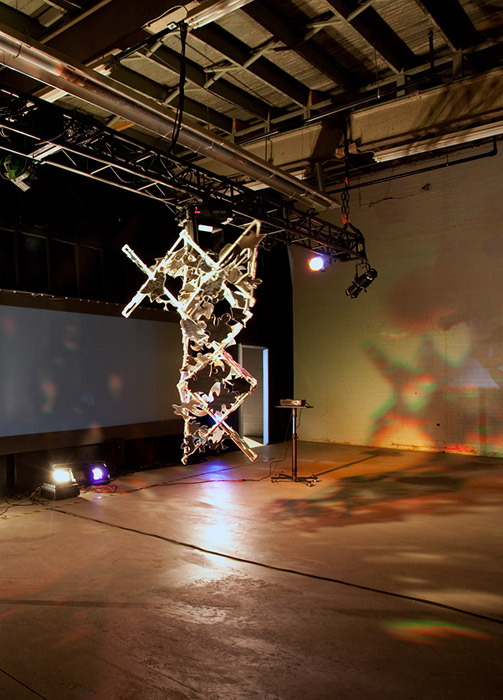
We recently visited Panter’s studio, an airy space on the top floor of his Brooklyn home, filled with random shiny objects, stacks of records, acrylic paintings, sculptural mobiles and around 200 sketchbooks. The duo calls much of this miscellany “light show potential”—things that can be thrown in the mix to modify the already trippy liquid light show. At its foundation, the spectacle’s lava lamp quality is as simple as colored water and colored oil continuously moving around on top of an overhead projector.
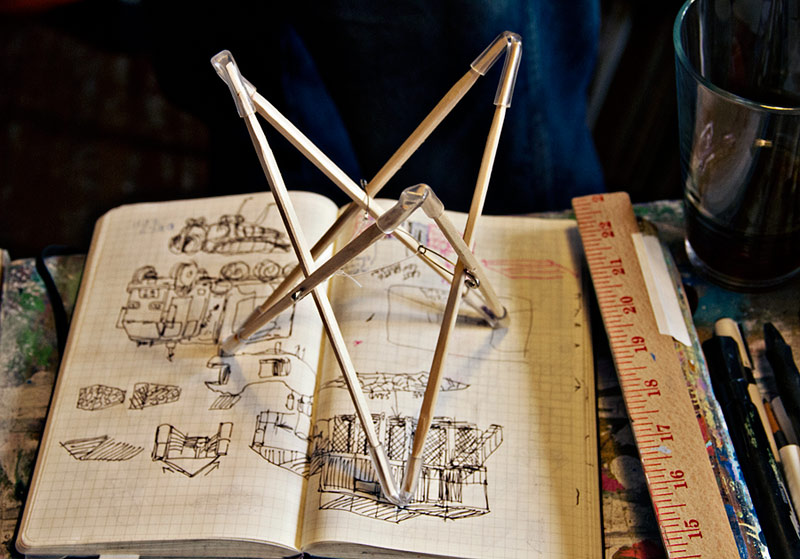
As the MoCAD show demonstrates, their approach has expanded in concept and size over the years, but really only in a sense of refinement. The DIY vibe still lingers, evident in the shoebox mockup, sketches and sculptural models Panter created for the exhibition. The fun house effect Panter lends the show is likely a nod to his days working on the sets of Pee Wee’s Playhouse, which now provides the perfect environment for White’s immersive light show installation at the museum. Whether in a slightly more static setting like the Detroit exhibition or in their performative light shows that reflect the music playing at the moment, White and Panter’s work always stems from their art first.
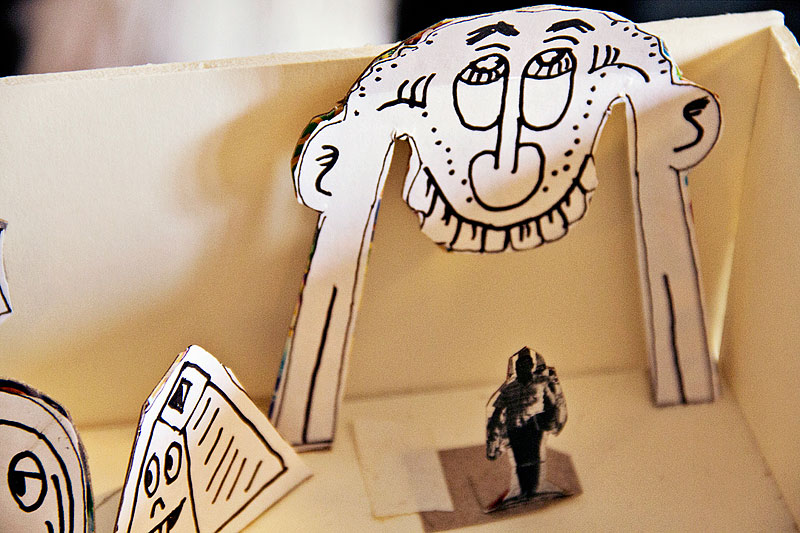
Their candid analog style isn’t without any digital elements—they often distort computer-generated imagery in their light show performances—but you definitely won’t catch them doing a laser light show. “I have two problems with lasers,” White explains. “One is that it is a very strange repurposing of something that is so magnificently pure. And the other thing is the colors—well it’s not a rich palette. Kind of cold.” Instead they employ a “less is more” approach to their work, which keeps the shows from becoming what White calls “too soupy or too speedy” while allowing the audience’s minds to wander. “We have people coming up to us going ‘were there camels carrying giant bears?’ or something, and we always say ‘You saw that? Good for you!'” They toy with synesthesia, giving freedom to the people watching to interpret the visuals how they like.
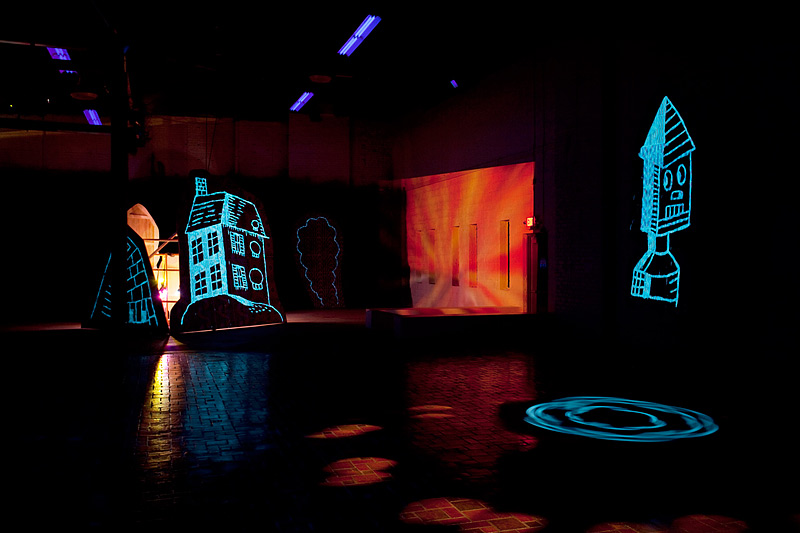
Together they continue to put on performative light shows, working with bands whose musical style closely matches their own experimental nature. Separately they both work on personal projects, and soon Panter will begin a residency at the Cullman Center at the New York Public Library, which is funding the third installment and paradise version of his Divine Comedy graphic novels. Panter painstakingly dipped a chopstick in ink to draw the first two intricately detailed books, “Jimbo in Purgatory” and “Jimbo’s Inferno”.
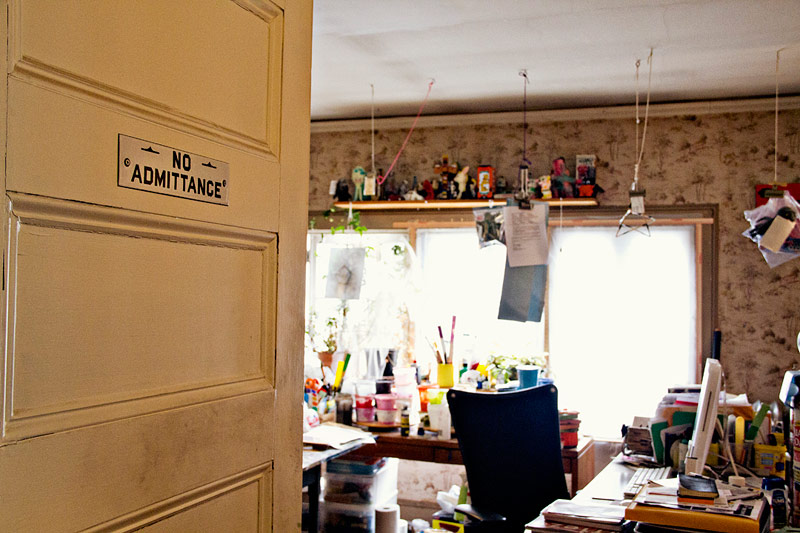
The most obvious realization that comes across after spending any amount of time with White and Panter is that they are both highly intelligent and their work is a distillation of their hyperactive minds. Their ability to funnel ideas into various artistic forms speaks to their innate creative talents, and the results are entertaining as well as enlightening.
“Joshua White and Gary Panter’s Light Show” is currently on view at MoCAD through 29 April 2012. Panter shows his fine art work at Fredericks & Freiser gallery in NYC and performs with his band, Devin Gary & Ross at venues around Bushwick in Brooklyn.
Photos of Panter’s studio shot by Charis Kirchheimer. See more images in the slideshow.



























